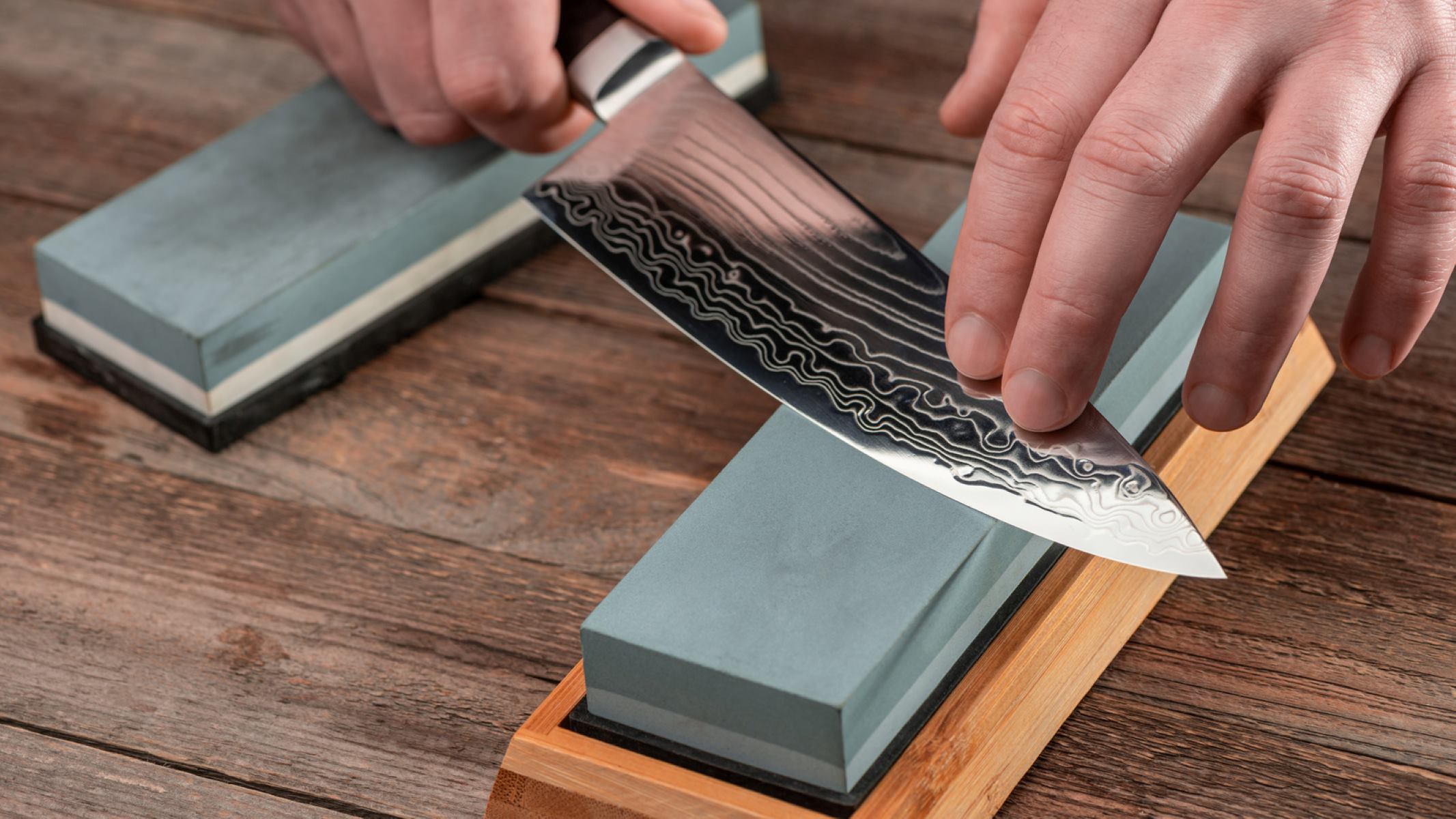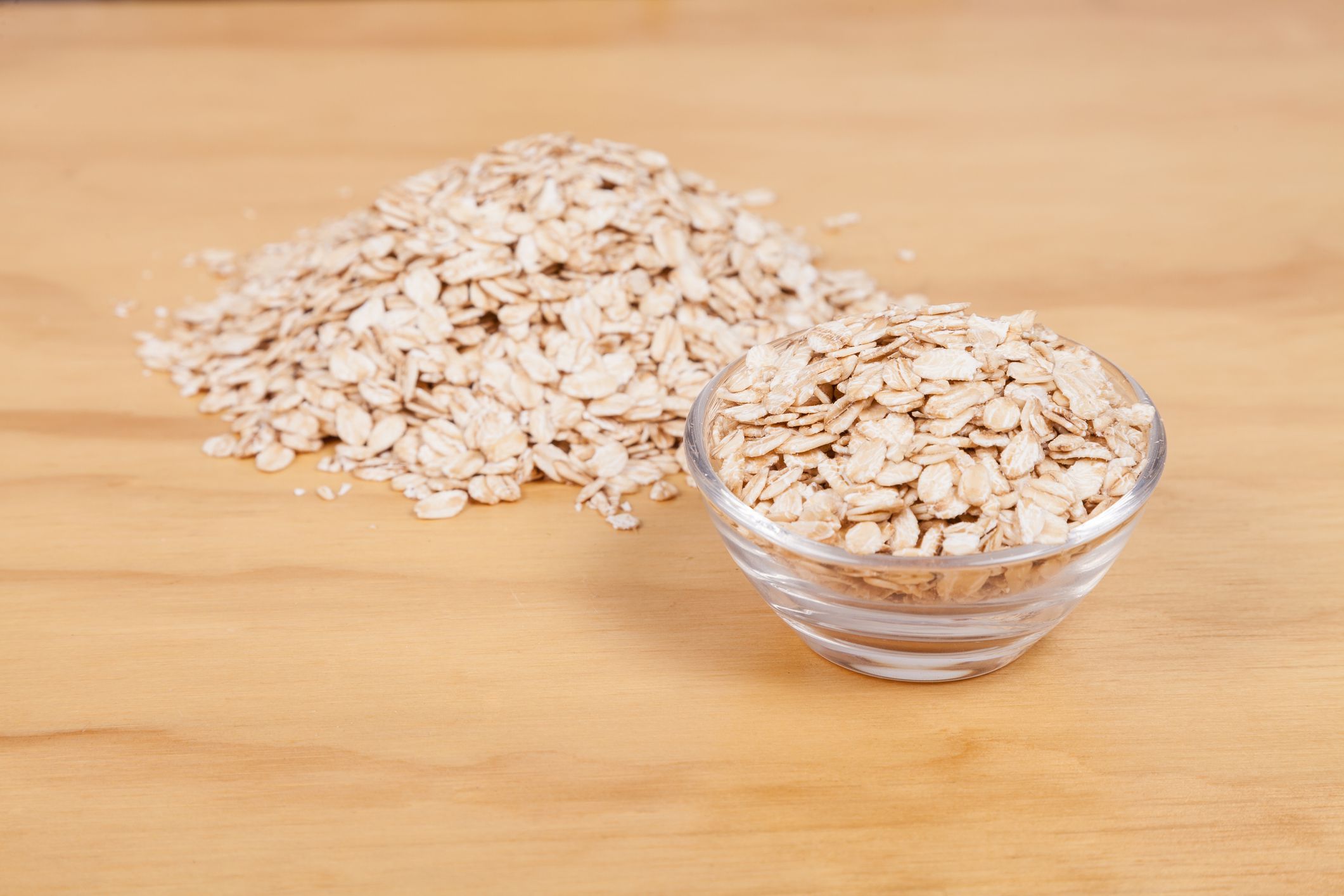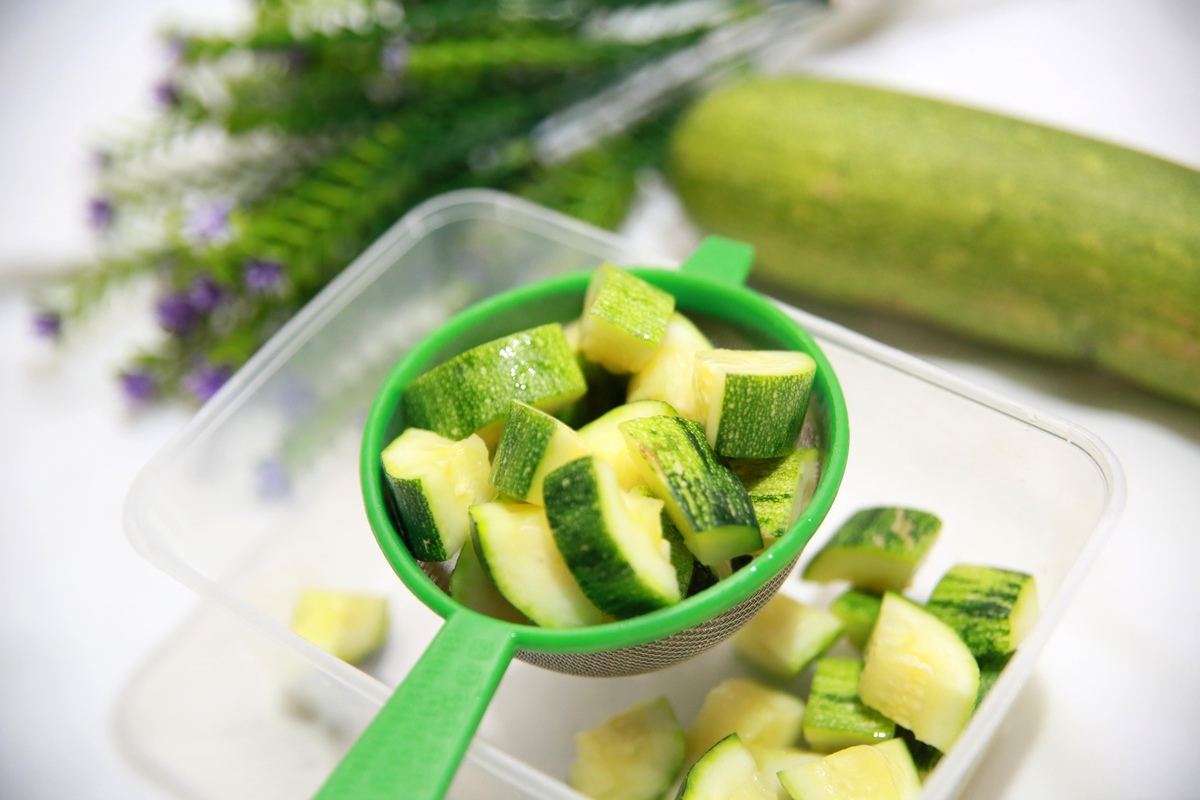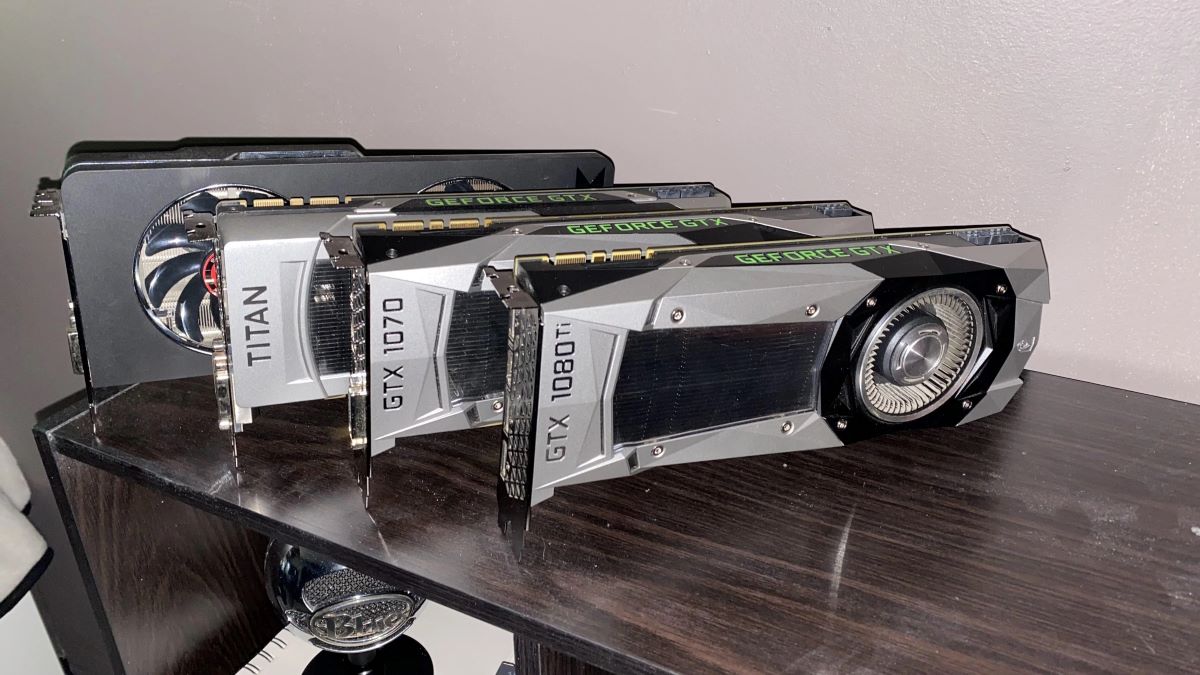

Articles
How To Store Whetstone
Modified: March 1, 2024
Learn the best way to store your whetstone with our helpful articles. Keep your sharpening stone in top condition for long-lasting use.
(Many of the links in this article redirect to a specific reviewed product. Your purchase of these products through affiliate links helps to generate commission for Storables.com, at no extra cost. Learn more)
Introduction
Welcome to our comprehensive guide on how to store your whetstone properly. Whetstones are essential tools for keeping your knives sharp and in top condition. However, improper storage can lead to damage and reduce the effectiveness of your whetstone over time. By following the steps outlined in this article, you can ensure that your whetstone remains in optimal condition for years to come.
Whetstones, also known as sharpening stones, are abrasive stones used to sharpen and hone the edges of knives and other cutting tools. They come in various grit sizes, ranging from coarse to fine, allowing you to adjust the level of sharpness and polish of your blades. Whether you are a professional chef, a culinary enthusiast, or a DIY enthusiast, owning a whetstone is essential for maintaining the sharpness and functionality of your knives.
Proper storage of your whetstone is crucial to maintain its effectiveness and extend its lifespan. When stored correctly, you can avoid damage from moisture, dust, and other environmental factors that can affect its performance. In this article, we will guide you through the process of selecting the right storage location, cleaning the whetstone before storage, preparing it for storage, wrapping and protecting it, and storing it in a safe place. Additionally, we will discuss the importance of regular maintenance and inspection to ensure your whetstone remains in optimal condition.
By following these guidelines, you can prolong the life of your whetstone and ensure that it continues to provide excellent sharpening results each time you use it. Let’s dive in and learn how to properly store your valuable whetstone.
Key Takeaways:
- Proper storage of your whetstone is crucial to maintain its effectiveness and longevity. Choose the right location, clean, prepare, wrap, and store it safely to ensure optimal sharpening results.
- Regular maintenance and inspection of your whetstone are essential for preserving its condition and performance. Keep it dry, flat, and protected to enjoy consistently sharp knives.
Read more: How To Store A Whetstone
Understanding Whetstones
Before we delve into the intricacies of storing whetstones, it’s important to have a solid understanding of what they are and how they work. Whetstones are typically made from natural or synthetic materials, such as water stones, oil stones, or diamond stones. Each type of whetstone has its own unique characteristics.
- Water Stones: These whetstones are designed to be soaked in water before use. They are known for their ability to sharpen blades quickly and efficiently. Water stones are available in various grit sizes, allowing for versatile sharpening options.
- Oil Stones: Oil stones, as the name suggests, require oil to be applied to their surface before sharpening. They are typically made from silicon carbide or aluminum oxide, providing excellent durability and cutting performance.
- Diamond Stones: Diamond stones are known for their exceptional hardness and durability. They feature a layer of industrial-grade diamonds bonded to a metal plate. Diamond stones are incredibly effective at sharpening even the toughest materials.
Regardless of the type of whetstone you own, proper storage is crucial to maintain its quality and effectiveness over time. Without proper storage, whetstones can become contaminated with dust, dirt, and moisture, which can hinder their sharpening capabilities and potentially cause damage.
It’s also important to note that whetstones require periodic flattening to maintain a flat and even surface. This ensures consistent and precise sharpening results. Flattening is typically done using a specialized flattening stone or diamond plate. Including regular flattening in your whetstone maintenance routine will enhance its performance and longevity.
Now that you have a basic understanding of whetstones and the importance of proper storage, let’s move on to the next section, which focuses on choosing the right storage location for your whetstone.
Choosing the Right Storage Location
When it comes to storing your whetstone, choosing the right location is crucial to ensure its safety and longevity. Here are some factors to consider when selecting the ideal storage spot:
Avoid Moisture:
One of the main enemies of a whetstone is moisture. Moisture can cause the stone to degrade and lose its sharpening properties. It can also lead to the growth of mold and bacteria, which can further damage the stone. Therefore, it is important to choose a storage location that is dry and well-ventilated.
Away from Heat Sources:
High temperatures can also negatively impact the quality of your whetstone. Avoid storing it near heat sources such as ovens, stovetops, or direct sunlight. Excessive heat can cause the stone to warp or crack, rendering it useless for sharpening your knives.
Protected from Dust and Debris:
Dust and debris can accumulate on the surface of the whetstone, affecting its sharpening performance. Look for a storage location that minimizes exposure to dust and other particles. Keeping your whetstone covered or in a sealed container can help prevent the buildup of unwanted materials.
Accessible and Convenient:
Choose a storage location that is easily accessible when you need to use the whetstone. This will encourage you to frequently maintain and sharpen your knives. Consider a spot near your kitchen or workspace where you typically use your knives.
Separate from Other Tools:
To prevent any potential damage, it’s important to store your whetstone separately from other tools or objects that could scratch or chip its surface. Find a designated storage area or container solely for your whetstone to ensure its safety and preserve its integrity.
By considering these factors when choosing a storage location for your whetstone, you can protect it from moisture, heat, dust, and other potential hazards. In the next section, we will discuss the importance of cleaning your whetstone before storage.
Cleaning the Whetstone Before Storage
Before you store your whetstone, it’s essential to clean it thoroughly to remove any debris, residue, or metal particles that may have accumulated during sharpening. Cleaning will not only help maintain the performance of the stone but also prevent any contamination that could affect future sharpening sessions. Here’s a step-by-step guide on how to clean your whetstone:
Step 1: Remove any loose particles:
Using a brush or a cloth, gently remove any loose debris or residue from the surface of the whetstone. Be careful not to apply too much pressure, as this could damage the stone.
Step 2: Rinse with clean water:
Fill a container with clean water and submerge the whetstone. Gently agitate the water to dislodge any remaining debris. Continue rinsing until the water runs clear.
Step 3: Use a mild detergent (optional):
If there are stubborn stains or residues on the whetstone, you may use a mild detergent. Apply a small amount to a soft brush and scrub the surface gently. Rinse thoroughly with clean water afterwards.
Step 4: Dry the whetstone:
After cleaning, place the whetstone in a well-ventilated area or use a towel to absorb excess moisture. Ensure that the stone is completely dry before moving on to the next step.
By following these cleaning steps, you can ensure that your whetstone is free from any contaminants that could compromise its sharpening abilities. In the next section, we will discuss how to properly prepare the whetstone for storage.
Preparing the Whetstone for Storage
Once your whetstone is clean and dry, it’s time to prepare it for storage. Taking the proper steps to prepare your whetstone will help maintain its condition and ensure it’s ready for future sharpening sessions. Here’s what you need to do:
Step 1: Inspect the whetstone:
Before storing your whetstone, carefully inspect it for any signs of damage, such as cracks or chips. If you notice any severe damage, it may be necessary to replace the stone. Minor imperfections can often be addressed through proper maintenance and flattening techniques.
Step 2: Flatten the whetstone if necessary:
If your whetstone has become uneven or has developed a concave or convex shape, it’s important to flatten it before storage. You can use a flattening stone or diamond plate specifically designed for this purpose. Follow the instructions provided with the flattening tool to restore the flatness of the whetstone’s surface.
Step 3: Apply a protective coating (optional):
Some whetstones benefit from having a protective coating applied before storage. This can help prevent moisture absorption and keep the stone in optimal condition. Check the manufacturer’s guidelines to determine if your whetstone requires this step and the recommended type of coating to use.
Step 4: Dry the whetstone again, if necessary:
If the whetstone became damp during the previous steps, ensure it is completely dry before proceeding to the next stage of storage preparation.
By following these preparation steps, you can ensure that your whetstone is in good condition and ready for storage. In the next section, we will discuss how to properly wrap and protect your whetstone.
After using a whetstone, make sure to clean it thoroughly with water and a brush to remove any metal particles and debris. Store it in a dry place to prevent rusting and keep it in a protective case or box to avoid damage.
Read more: How To Store Store-Bought Bread
Wrapping and Protecting the Whetstone
Properly wrapping and protecting your whetstone is essential to prevent scratches, chips, and other forms of damage during storage. By taking a few simple steps, you can ensure the longevity and effectiveness of your whetstone. Here’s how to wrap and protect your whetstone:
Step 1: Choose a protective material:
There are several options for wrapping your whetstone. Many people choose to use a soft cloth or towel to create a protective barrier. Alternatively, you can use a dedicated whetstone case or sleeve to keep your stone safe. The important thing is to choose a material that will prevent scratches and provide cushioning for the whetstone.
Step 2: Wrap the whetstone securely:
Place the whetstone in the center of the protective material. Fold the cloth or towel over the stone, ensuring that the entire surface is covered. Secure the wrapping by tying it with a rubber band or using a Velcro strap if using a dedicated case or sleeve. Make sure the whetstone is snugly wrapped to prevent it from moving around during storage.
Step 3: Label the wrapped whetstone (optional):
If you have multiple whetstones or other sharpening tools stored together, it can be helpful to label each wrapped whetstone. This will make it easier to identify the specific grit or type of stone when you need to use it.
Step 4: Store the wrapped whetstone in a protective container:
To provide an extra layer of protection, store the wrapped whetstone in a dedicated storage container or a sealed plastic bag. This will further shield the stone from dust, moisture, and other potential contaminants. Ensure that the container has enough space for the wrapped whetstone and is stored in a safe location.
By following these wrapping and protecting steps, you can safeguard your whetstone from damage and keep it in excellent condition for future use. In the next section, we will discuss the recommended practices for storing the whetstone in a safe place.
Storing the Whetstone in a Safe Place
Choosing the right storage location for your wrapped and protected whetstone is crucial to ensure its long-term preservation. By following these recommendations, you can keep your whetstone stored in a safe and accessible place:
Avoid Extreme Temperatures:
Store your whetstone in an area with a relatively stable temperature. Extreme heat or cold can potentially damage the stone and affect its sharpening capabilities. Find a storage spot away from heaters, direct sunlight, and areas prone to temperature fluctuations.
Keep It Dry:
Moisture is the enemy of whetstones. Make sure to store your whetstone in a dry environment to prevent any damage or degradation. Avoid areas with high humidity, like the bathroom or the basement, as they can introduce moisture to the stone.
Store It Upright:
To minimize the risk of accidental damage, store your whetstone in an upright position. This prevents any unnecessary pressure or weight being placed on the stone, reducing the likelihood of cracking or chipping.
Separate from Other Tools:
To avoid any potential scratching or damage, store your whetstone separately from other tools or objects. By keeping it in its dedicated container or in a designated spot, you can ensure that it remains protected and in prime condition for sharpening tasks.
Elevate from the Ground:
To further protect your whetstone, elevate it from the ground. Placing it on a shelf, rack, or even on a piece of soft cloth can prevent it from coming into contact with any debris or moisture that may accumulate on the floor.
Keep It Accessible:
Choose a storage location that is easily accessible when you need to use the whetstone. This will allow you to quickly retrieve and maintain your knives, encouraging regular sharpening and maintenance.
By following these storage practices, you can ensure that your whetstone remains in optimal condition for future use. In the next section, we will discuss the importance of regular maintenance and inspection of your whetstone.
Regular Maintenance and Inspection of the Whetstone
Regular maintenance and inspection of your whetstone are essential to ensure its longevity and optimal performance. By incorporating these practices into your routine, you can keep your whetstone in excellent condition. Here’s what you need to do:
Flatten the Whetstone:
Regularly check your whetstone for any signs of unevenness or wear. If you notice the surface becoming concave or convex, it’s time to flatten it. Using a flattening stone or diamond plate, follow the manufacturer’s instructions to restore the flatness of your whetstone. This will ensure consistent and precise sharpening results.
Clean the Whetstone:
Periodically clean your whetstone to remove any debris, residue, or metal particles that may have accumulated during sharpening. Follow the cleaning steps mentioned earlier in this article to keep your whetstone free from contaminants.
Inspect for Damage:
Regularly inspect your whetstone for any signs of damage, such as cracks, chips, or deep grooves. If you notice any severe damage, it may be necessary to replace the stone. Minor imperfections can often be addressed through proper maintenance and flattening techniques.
Keep it Dry:
Ensure that your whetstone is completely dry before storing it. Moisture can damage the stone and compromise its performance. If you notice any moisture on the surface, allow it to air dry thoroughly before use or storage.
Protect the Surface:
When using your whetstone, place a non-slip mat or towel underneath to prevent any accidental slips or scratches. This will also help protect the surface of the stone from damage.
Follow Manufacturer’s Guidelines:
Always refer to the manufacturer’s guidelines and recommendations for proper maintenance and care of your specific whetstone. Different types of stones may require specific cleaning methods or additional steps to maintain their optimal condition.
By incorporating these maintenance and inspection practices into your routine, you can ensure that your whetstone remains in excellent condition and provides the best sharpening results. Now, let’s conclude our guide on how to store your whetstone properly.
Conclusion
Storing your whetstone properly is essential to maintain its effectiveness, longevity, and overall performance. By following the guidelines outlined in this comprehensive guide, you can ensure that your whetstone remains in optimal condition for years to come. Here are the key takeaways:
- Choose the right storage location that is dry, away from heat sources, and protected from dust and debris.
- Clean your whetstone before storage to remove any debris and contaminants.
- Inspect and prepare the whetstone for storage, ensuring it is in good condition and flat.
- Wrap and protect the whetstone with a soft cloth or dedicated case to prevent scratches and damage.
- Store the whetstone in a safe place, avoiding extreme temperatures and separating it from other tools.
- Maintain and inspect your whetstone regularly, flattening as needed and keeping it dry and clean.
By following these steps, you can ensure that your whetstone is always ready for use and provides excellent sharpening results. Regular maintenance and proper storage not only preserve the lifespan of your whetstone but also contribute to maintaining the sharpness and functionality of your knives.
Remember, a well-maintained whetstone is the key to keeping your knives at their best and enhancing your culinary or DIY experience. Incorporate these storage practices into your routine, and you’ll enjoy the benefits of a sharp and efficient cutting tool every time.
Thank you for reading our guide on how to store your whetstone properly. We hope you found it informative and useful. Happy sharpening!
Frequently Asked Questions about How To Store Whetstone
Was this page helpful?
At Storables.com, we guarantee accurate and reliable information. Our content, validated by Expert Board Contributors, is crafted following stringent Editorial Policies. We're committed to providing you with well-researched, expert-backed insights for all your informational needs.















0 thoughts on “How To Store Whetstone”